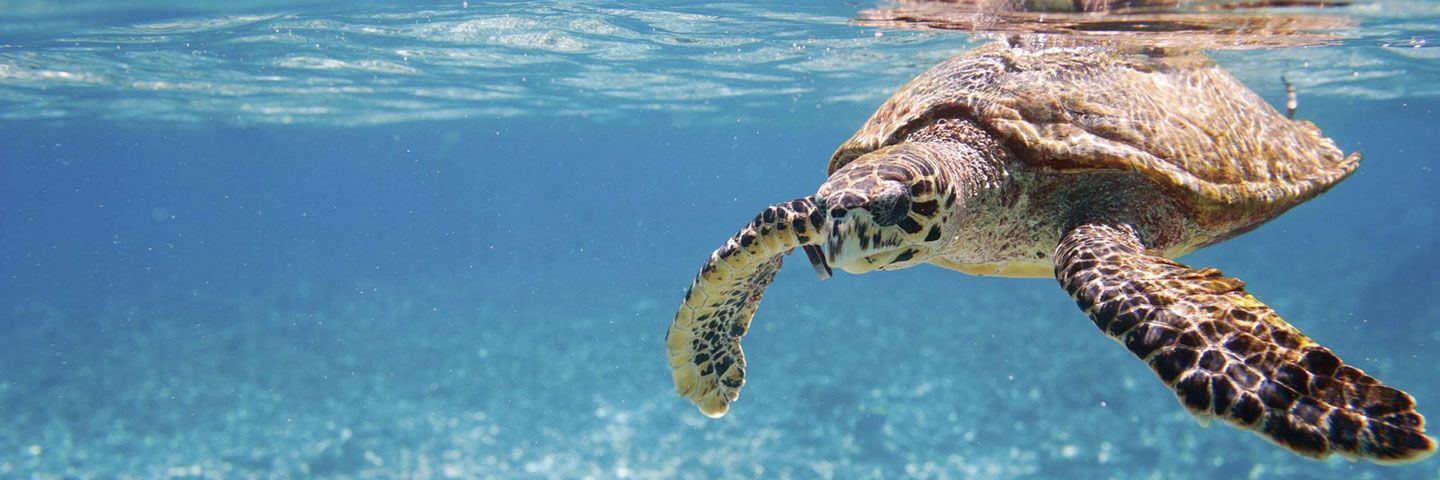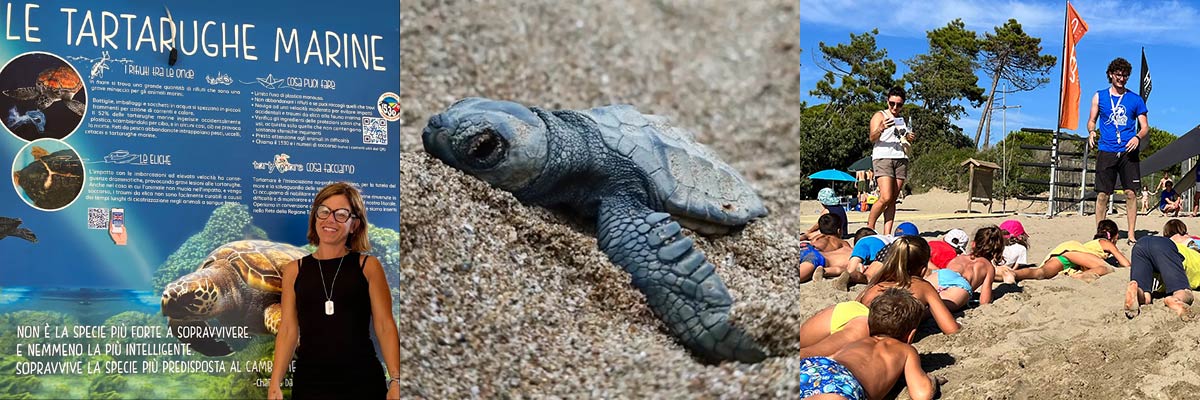- PuntAla
- Services and activities

- AccommodationRESORT
- Offers
Details & Book
Are you visiting our resort for a sport event or for spending a day on the beach to discover our destination?
Find out how to do
We had the opportunity to interview Professor Luana Papetti, scientific advisor of the non-profit association tartAmare, which works to care for and rehabilitate sea turtle specimens found in distress.
tartAmare operates on the Tuscan coast from Marina di Pisa to Capalbio, excluding the Maremma Park, and has its operational headquarters in Marina di Grosseto.
Tuscany Environment Foundation in cooperation with tartAmare and with the contribution of the camping, created the posters displayed in the camping illustrating the activities to protect the loggerhead (Caretta caretta) sea turtle and the marine environment.

How many interventions have you carried out this year for sea turtles?
Over the year, we responded to several cases. Unfortunately, most of the interventions were on carcasses, but we managed to save a turtle that has been accidentally caught in a fishing net. In addition, we responded to eight nests, most of which were discovered through our active monitoring and research activities. Some nests were discovered accidentally after hatching, as they had not been spotted during laying. On a couple of these occasions, we found the newborns, at which point, we cordoned off the area to ensure a safe route to the sea for them.
How many turtles have you cared for and released into the sea in 2023?
We rescued a turtle that we named Rocco after a fisherman from Castiglione della Pescaia caught in his nets and promptly alerted us.
We must know that the turtle is an omnivore and loves to eat fish very much, but in the wild it has difficulty catching it because it is a large, cumbersome animal and not agile enough to catch it when the fish is healthy. It easily escapes them by taking refuge in the crevices between the rocks, or just by running away. So, when fish find themselves trapped in nets, dying or already dead, it is like an open fatal feast for the turtle.
Although a creature suitable for apnoea, the turtle being a reptile, needs to breathe air and can only remain underwater for a limited period. It remains trapped in the nets for too long, there is a risk of drowning. Further, the net can cause injuries and entrapment of the limbs. Thus, the main issues we face are pneumonia, drowning or injuries to extremities.
What significant results have you achieved concerning the conservation of this marine species?
During my time in Grosseto, I have worked with sea turtles for almost 15 years. During this time, I estimate that I cared for and returned around 150 turtles to the water. As for the newly hatched turtles that we helped reach the sea, the precise number is difficult to specify. Considering that on average there are about 80 births per nest, and we monitored eight nests, the total is rather high. However, it must be said that, once at sea, these creatures face high mortality rates.
Our operational, scientific growth and above all as an outreach organisation has been remarkable. We have reach a stage where we are considered a national benchmark. In November, representing the entire tartAmare group, we will participate in a technical round table organised by the Ministry to define new national guidelines on the conservation and protection of this species. This invitation is a ministerial recognition of our work as a scientific association. We have high specialisation in sea turtles and more generally marine biology. At the local level, our voice is definitely heard and respected.
Has there been any significant progress and/or change in sea turtle habitat compared to previous years? In other words, have you seen an improvement or deterioration in the survival of sea turtles?
Over the years, we have experienced both progress and setbacks. Pollution and marine litter pose a greater threat today than when I started 15 years ago. Whereas in the past most rescue cases were related to intervention with fishing, nowadays most turtles require treatment due to the effects of pollution, often because they are trapped or have ingested objects or plastics.
At the same time, the increase in sea turtle nests in our locations reflects warming effects of the Mediterranean Sea and the turtles’ need for high temperatures for embryonic egg development.
Fortunately, these creatures show great elasticity and resilience, adapting to new changes and colonising new areas. Our support facilitates this adaptation, making the transition quicker and thus promoting the survival of these species in a changing marine environment.
However, the threats to survival from pollution remain present, we try to reduce them with enforcement measures and other tools at our disposal. With the high mortality rates of turtles, very few of them make it to the adult stage and then if they are killed by plastics, it becomes problematic to get real results. Every disadvantage must be challenged.
What do biological tissue analyses reveal to you?
We have several research projects, including a brand new one with the Marche Polytechnic University whose publication has just come out. For the first time, we studied in the world the presence of microplastics in the yolk and liver of the embryo of unhatched eggs. Very laborious follow-up studies will now be necessary. As an example, we need to find out if these microplastics inside the nest are derivative, i.e. if they come from the mother while she is forming the egg.
What are your plans for the future based on your experiences and achievements?
Along with our rescue, recovery and rehabilitation activities, we aim to innovate with summer initiatives to engage and raise awareness.
We integrate students from all over Italy into our team, using the facilities available in the Maremma to organise our “TartaCamps”. Here, we involve young people and tourists in beach patrols, teaching them how to identify turtle nests, and then set up adequate protection and organise monitoring. We promote scientific information and dissemination initiatives to educate good practices for the protection of the marine environment and the conservation of biodiversity.
Our activity, as also demonstrated at the PuntAla camping, is closely linked to environmental education and awareness-raising because, in order to protect marine species, it is not enough to save individual specimens or nests, it is necessary to change the lifestyle of humans. Therefore, we use our field activities as a mean to promote a change in people’s thinking and habits.
We do not only recommend a change in behaviour, we involve people by getting them to participate in activities, such as the release of a turtle or the birth of hatchlings. Turtles are empathetic species and, during these events, the involvement is more conducive to raising awareness among us and the groups involved in these activities.
Punta Ala, 29 September 2023